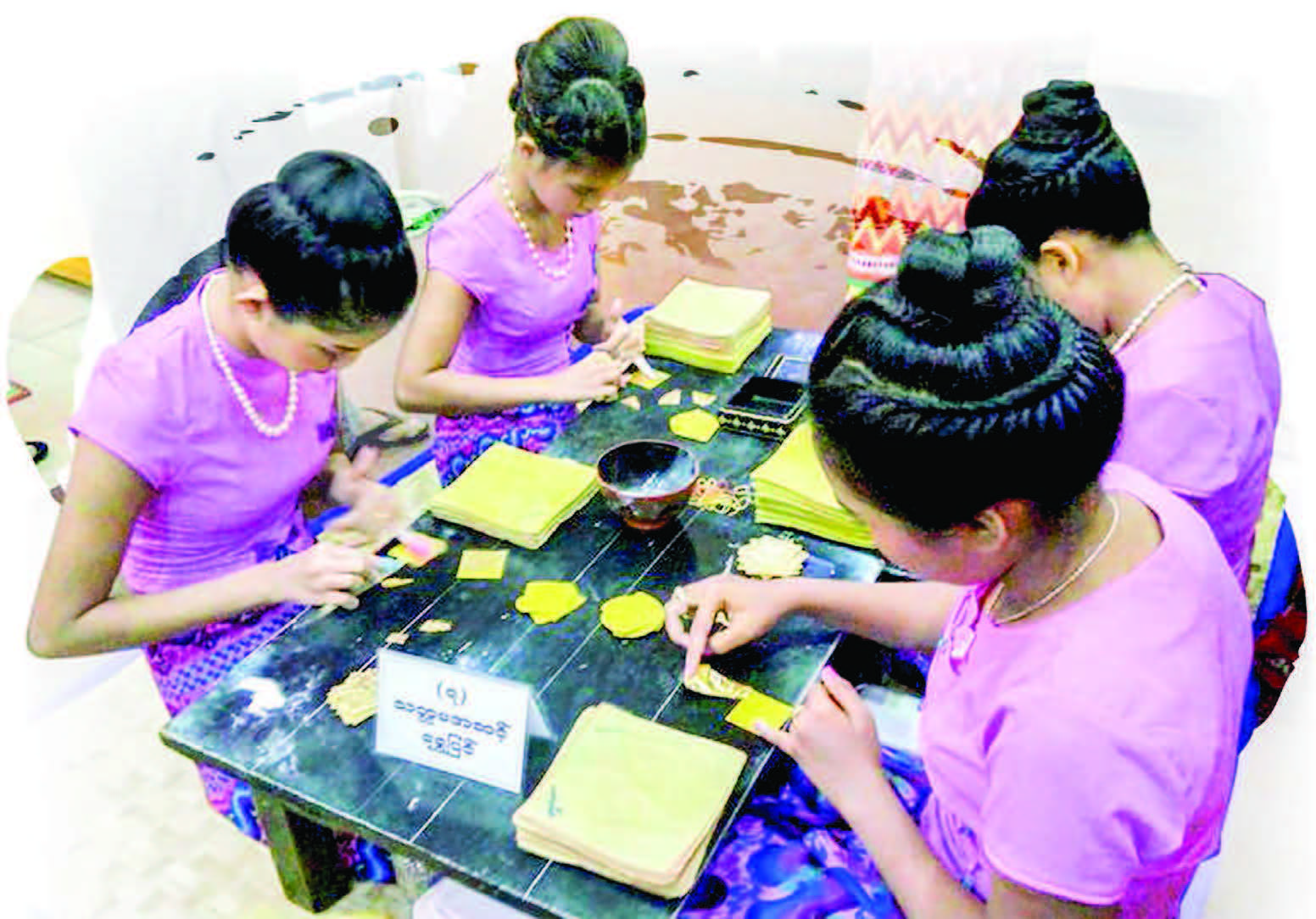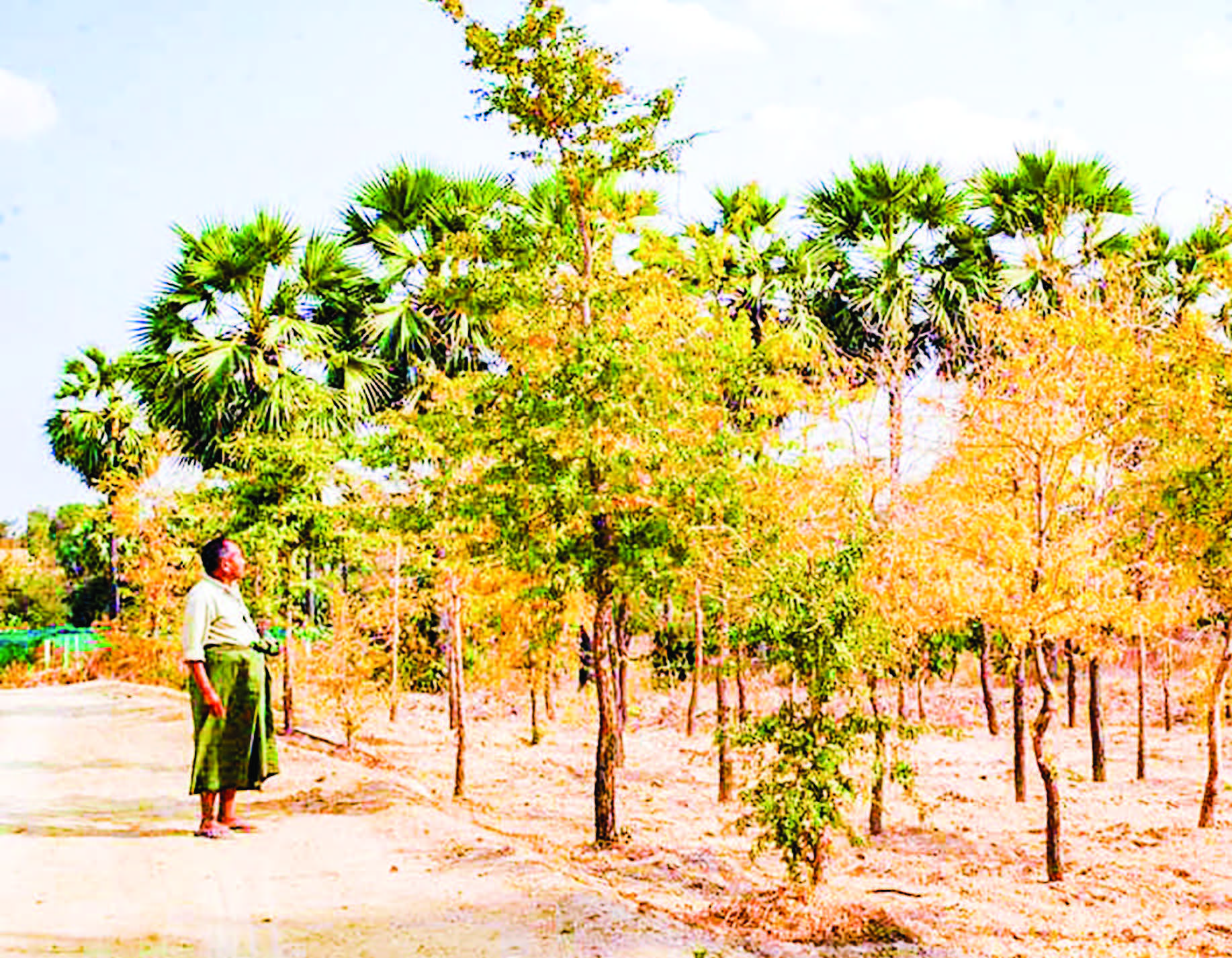(Mar Lar Aung - Culture)
"The cultural heritage of a nation or region is not solely composed of monuments and museum collections, but also of living intangible expressions inherited from our ancestors and passed on to our descendants… "
– UNESCO
“ MYANMAR has a rich and diverse culture and among them, the culture rooted in everyone’s heart is the intangible culture with no visual manifestation, which includes daily routines, traditions, rituals and customs of a person. The cultural heritage can be passed down from generation to generation verbally with or without practical training. Whether or not there is a record, the evolution from the past to present is the emergence of cultural heritage.
Since Myanmar is one of the most civilized nations in Southeast Asia (SEA) it also experienced a significant change in the past seventy-years as other SEA countries. Following a tumultuous period of decolonization, civil-war, and the challenges of nation-building, the region has emerged poised to play an important part in the forthcoming “Asian Century” and nomination of World Heritage List and other records of Tangible, Intangible and Natural Heritages provide a blueprint for deepening and widening cultural cooperation and awareness of SEA Cultures across the region.
In recent years, due to the ageing of practitioners and the lack of successors for their arts and crafts, a great amount of Intangible Cultural Heritage is facing the danger of extinction. That is why countries realized that urgent steps must be taken to preserve and promote intangible heritage. In addition to creating an atlas of the world’s languages in danger of disappearing, there are some tribes and languages which are lost day by day also in Myanmar.
Since Myanmar is one of the largest repositories of tangible heritage in the world, a major part of this heritage has been preserved through ancient monuments, sites and antiquities of varied nature. The range of such relics from the past, is indeed very vast and covers a long span of time i.e. prehistoric to colonial times. The monuments, sites and antiquities protected and maintained so far by the Archaeology Department are only a fraction of the total repository of the country. However, most of these have not been documented in a uniform format which can provide a common platform to the scholars, researchers and planners for reference, research and its management in a diligent manner. Not only the Inventory but those implementing works being carried out annually are work-based depending on the allotted budget, instead of theme with high concepts and nature of sustainability and thorough assessment.

Why ICH
Intangible cultural heritage is renowned as a wealth of knowledge to be used in many aspects of life. Women hold a special place in the transmission of intangible heritage and have knowledge that contributes to their empowerment and revenue generation. Moreover, ICH is also vital for maintaining cultural diversity in the face of globalization. It is noted that understanding ICH contributes to intercultural dialogue, encourages mutual respect and ensures social cohesion. Now it is accepted that the importance of ICH is not the cultural manifestation itself; it lies in its significance to communities. Its value is both intangible and tangible, linked to the social and economic effects of the knowledge and skills transmitted through it.
Ratification of the 2003 Convention Background
UNESCO adopted the Recommendation on the Safeguarding of Traditional Culture and Folklore as the first legal instrument towards the safeguarding of intangible cultural heritage in 1989. With this Recommendation which reflected the ideas of the earlier Conference in Mexico City, UNESCO conducted some promotional programmes for raising awareness of this Recommendation. In the late 1990s, there was a conference held for the assessment of this Recommendation, which pointed out some problems to be considered in drafting the Convention.
In 1997, UNESCO launched the programme of Proclamation of the Masterpieces of the Oral and Intangible Heritage of Humanity, intending to raise awareness of the importance of intangible heritage. This programme proclaimed a total of 90 masterpieces between 2001 and 2005 and caused the movement towards the 2003 Convention.
Intangible cultural heritage refers to “traditions or living expressions inherited from our ancestors and passed on to our descendants, such as oral traditions, performing arts, social practices, rituals, festive events, knowledge and practices concerning nature and the universe or the knowledge and skills to produce traditional crafts”, its 2003 Convention is unlike other UNESCO conventions which have stated its purposes as :
a. to safeguard the intangible cultural heritage;
b. to ensure respect for the intangible cultural heritage of the communities, groups and individuals concerned;
c. to raise awareness at the local, national and international levels of the importance of the intangible cultural heritage, and of ensuring mutual appreciation thereof;
d. to provide for international cooperation and assistance]
According to the 2003 Convention, the Intangible Cultural Heritage is defined as the practices, representations, expressions, knowledge, and skills – as well as the instruments, objects, artefacts and cultural spaces associated therewith – that communities, groups and individuals recognize as part of their cultural heritage.
Since Myanmar values the cultural heritage and understands the importance to safeguard its cultural heritage, ratified the UNESCO’s Convention on the Safeguarding of Cultural Heritage on May 7, 2014. In order to be recognized and honoured with international cooperation. United Nations Educational, Scientific and Culture Organization (UNESCO) announced the Convention for the Safeguarding of Intangible Cultural Heritage at the 32nd Session of General Assembly, which was held from 29 September to 17 October 2003 in Paris, France.

Safeguarding of Myanmar’s Intangible Cultural Heritage
Myanmar has been traditionally practising the conservation of culture throughout its history. The transmission of Myanmar culture from the ancestors to today’s youths has been alive for centuries and it performs like living cultures.
The Government established the Ministry of Culture in 1952 after the independence of Myanmar and the Department of Cultural Institute under the Ministry of Culture, with the tasks of identifying the cultural traditions and customs that are passed down from generation to generation in Myanmar. The various functions of the different departments, such as doing research; presenting performances; displaying antiquities of Myanmar and its ethnic cultures related objects in museums; extending the libraries in all states and regions, are in a way of promoting Intangible Cultural Heritage which is incredibly rich in the country.
The Department of Archeology also has a number of cultural archetypes, such as ancient site, temple, and mural painting, stucco, etc... Archaeological excavations have been carried out in ancient sites of Myanmar since the British colonial time last for more than a hundred years ago. In 2007, the Department of Cultural Institute was merged with the Department of Archeology and named Department of Archaeology, National Museum and National Library. In 2013, the National Library, together with the Department of Historical Research, formed a new department, which is reorganized as the Department of Historical Research and National Library. At present, the Department of Archaeology and National Museum is dedicated to the sustainable development of Myanmar intangible culture, tangible culture and its cultural activities.
The Department of Fine Arts also offers the degree courses on arts such as painting, sculpture, music and dramatic art to help keep the Myanmar culture alive from the two universities Culture and Arts in Yangon and Mandalay in 1993 and 2001 respectively. Furthermore, the two art and dance schools are opened to spread the heritage of Myanmar traditional music and dramatic arts in and out of the country.
The Historical Research Department was put under the Ministry of Culture in 2007 and later merged with the National Library. The Department of Historical Research and National Library has to make research on Myanmar history and the collection of the ancient manuscript such as Palm-Leave and Parabite and as the national repository.
In 2016, the Ministry of Religious Affairs and Ministry of Culture merged as the Ministry of Religious Affairs and Culture, and those activities related to religious affairs and cultural activities are being carried out. At present, the survival of tangible and intangible cultural heritage has been endangered due to climatic, natural and manmade effects. In recent years, there is also an increasing trend of illicit trafficking of antiquities from Myanmar. This is mainly due to lack of public awareness, ignorance of law/act and also about the importance of documentation and preservation. There are few cities in the country where a number of important monuments and heritage buildings has been listed from time to time by different institutions and organizations but there is no comprehensive database at one place. To address these issues, with the objective to document unprotected monuments and sites from both secondary sources and antiquities from the primary source in a prescribed format, the departments under the Ministry of Culture are undertaking those works. There are various available sources for documenting this heritage which needs to be utilized and collated through a mission approach to create a credible aational data base.
Activities in accordance with the Convention
In line with the purpose of the 2003 Convention, as mentioned in Chapter 1, the following five domains are defined by UNESCO in order to make Myanmar cultural heritage more visible:
a. Oral Traditions and Expressions, including Language as vehicles for Intangible Cultural Heritage,(folk stories/ folktales, ancient manuscripts, traditional games)
b. Performing Arts ( folk dances/ visual arts, vocal arts, music )
c. Social Practices, Rituals and Festive events (Including social customs, festivals)
d. Knowledge and practices concerning nature and the universe (including traditional knowledge, local genius, traditional medicine)
e. Traditional Craftsmanship (painting, sculpture, traditional food)
According to Chapter 2 of the Organs of the Convention, the General Assembly holds regular conventions once every two years. Moreover, if it is decided that it needs to be held, whether requested an emergency meeting is convened when at least one-third of committees or consortiums are requested. Myanmar officials always participate in the meetings.
( TO BE CONTINUED)



